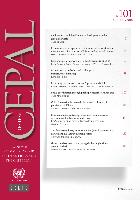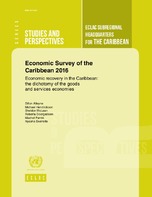Raúl Prebisch and the challenges of development of the XXI century
Terms of trade
One of the most famous and most controversial components of Raúl Prebisch’s thinking was his conviction that there had been a centuries’ long deterioration in the terms of trade of commodities and food vis-à-vis industrialized goods. Since the developing countries specialize in commodities and food, the downtrend in the value of these products would lead to a worsening of their terms of trade.
A worsening of the terms of trade means that if export volumes remain stable, these countries will see a decline in the purchasing power of these exports in relation to the value of goods and services imported from abroad.
These ideas are referred to in the literature as the Prebisch-Singer thesis, since the two analysts -Hans Singer and Raúl Prebisch- came up with very similar ideas at the same time.
This thesis has a fundamentally empirical basis, dating back to the end of the First World War, but especially the 1930s. This trend continued up to the late twentieth century, when relatively speaking commodity prices started to move up.
Prebisch’s interpretation of these trends was based on a series of rational theories. One of them is how income is distributed and how the fruits of technological progress are allocated in countries with different economic and social structures. The prices of exports from the centre and the periphery are based on highly uneven wages, which generate sharp inequalities and low wages in the periphery. Moreover, since the income elasticity of demand for commodities is low, demand for goods of this kind does not keep pace with income. Thus, developing countries are competing more intensely with each other for markets for their commodities, and they handle this by reducing prices; these price reductions are achieved not only by increasing productivity but also by the difficulties associated with appropriating these productivity gains domestically by raising wages and raising State capital. This problem of elasticities is compounded by the impact of technological progress on the replacement of natural goods by artificial and synthetic goods, which was one of the factors in the demand for goods such as textiles, nitrates, natural rubber, etc.
Another component of the Prebisch thesis on the terms of trade has to do with a pressing issue that attracted his attention: the wide fluctuations of the business cycles in the countries of the periphery. The basic idea was that when the world economy is booming, the demand for raw materials and food soars, pushing up prices sharply in the short term, whereas in the downswing, prices for these goods plummet; owing to the social reasons referred to above, no institutional mechanisms existed for stemming this decline. These fluctuations may mask underlying trends, but at the end of each cycle, the deterioration is even greater.
-
Full-text document Terms of trade
-
 Notes on trade from the standpoint of the periphery
by
Publication Date: 1986-04CEPAL Review No.28. p. 203-214 LC/G.1392
Notes on trade from the standpoint of the periphery
by
Publication Date: 1986-04CEPAL Review No.28. p. 203-214 LC/G.1392
Interviews
Prebisch y los términos de intercambio (2012 - 9:58)
Esta animación explica de forma simple y didáctica la teoría de la tendencia al deterioro de los términos de intercambio formulada por el economista argentino Raúl Prebisch.
José Antonio Ocampo: La teoría del deterioro de los términos de intercambio hoy (2013 - 2:27)
Antonio Prado: La región frente a la bonanza de los precios de los bienes primarios (2013 - 3:48)
Related documents
-
 Latin America: variability and persistence in commodity prices
by
Publication Date: 2011-04CEPAL Review No.103 p. 89-114 LC/G.2487-P
Latin America: variability and persistence in commodity prices
by
Publication Date: 2011-04CEPAL Review No.103 p. 89-114 LC/G.2487-P -
 The terms of trade for commodities in the twentieth century
by
Publication Date: 2003-04CEPAL Review No.79. p. 7-35 LC/G.2200-P
The terms of trade for commodities in the twentieth century
by
Publication Date: 2003-04CEPAL Review No.79. p. 7-35 LC/G.2200-P -
 Economic Survey of the Caribbean 2016. Economic recovery in the Caribbean: the dichotomy of the goods and services economies
by
Publication Date: 2017-02Studies and Perspectives Series No.53. 60 p.
Economic Survey of the Caribbean 2016. Economic recovery in the Caribbean: the dichotomy of the goods and services economies
by
Publication Date: 2017-02Studies and Perspectives Series No.53. 60 p.
LC/L.4296 - LC/CAR/L.507
